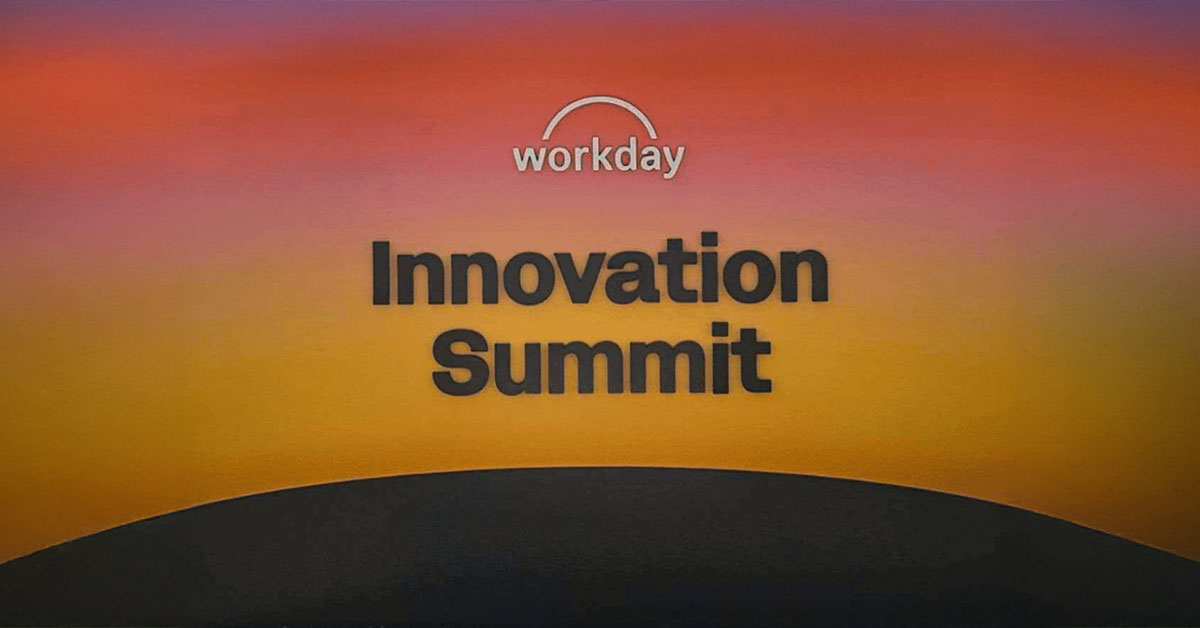The Agentic AI Pivot: Workday Innovation Summit 2025
Principal Analyst

Workday, the now 20-year-old SaaS solutions provider, has a lot of change afoot. The company is making fast-paced changes in every area, from new leadership to continually refined business, AI, and expanding partner strategies focused on growth. Plus, it has a new industry organization.
CEO Carl Eschenbach has brought in or promoted a group of senior leaders who now represent an almost entirely new team over the last two years. This is a senior team made up of experienced operators with broad backgrounds that put Workday in a position of strength, with the expectation that “speed” is the top priority, as stated by newly introduced President of Product and Technology Gerrit Kazmaier and President and Chief Commercial Officer Rob Enslin.
While attending the Workday Innovation Summit from April 22-24th, industry analysts had the opportunity to hear from this leadership team about their strategy for the coming year. Several leaders referred to Workday’s higher education industry investments and commitment. Eschenbach mentioned the period when he entered the CEO role when Workday was evaluating this investment. He made it very clear as he spoke about Workday’s deep investments in the product that the commitment to Student was significant. There was a time when Workday Student didn’t get much attention on main stages outside of higher education events, but that was not the case this week.
As noted above, we heard about product, leadership change, and go-to-market, industry, and partner strategies. There were plenty of opportunities to discuss these changes and provide feedback to the Workday team. Let’s hit each of these separately.
Product Strategy — Agentic AI
Agentic AI dominated our discussions with the Workday product and technology teams. Workday’s approach, which was announced last fall at Workday Rising and productized as Workday Illuminate, was demonstrated and detailed during this event. Agentic AI is hot across many leading software companies and combines generative and planning AI tools taking action in the application to enable real productivity gains by a user.
Workday’s take on Agentic AI is to allow users to engage with the Workday Assistant, which uses data accessible to the user to suggest and then act. The agent can open the appropriate screen and fill it in for the user, then show the user how to proceed with the action. Because it is transparent and traceable by the user, concerns about AI-based automation should be reduced, but that remains to be seen as these solutions are adopted.
Workday has several agents in testing for limited release with customers by the end of calendar 2025 as it assures these solutions’ quality and business outcomes. There was healthy discussion amongst the leaders and analysts present, including CEO Carl Eschenbach and Board Chair Aneel Bhusri, about the need for these solutions to provide real, measurable business value. I believe Workday is carefully crafting these agents to align with this principle.
The first agents are focused on complex functions where AI support can help a user tackle a difficult task more efficiently. Examples include a payroll agent and a financial audit agent. An employee self-service agent is also in development. According to Michael Hofherr, SVP of Industry, and Kate Russell, Head of Industry Strategy, important agentic AI developments are underway for some of the most complex problems in higher education.
Along with creating AI agents on the platform, Workday has developed a way to manage all agents for an institution with the Agent System of Record (ASOR). Workday sees agents as requiring management like that of employees. Managers need to know who they are, who owns them, and what they have access to do. In this way, Workday provides a way to manage:
- Workday-created agents
- Third-party agents that interact with Workday
- Third-party agents that can interact with Workday agents (e.g., Salesforce)
- Third-party agents that only require registration and management in the ASOR.
New agent integration protocols allow agents to interact with each other, Workday, third-party systems via APIs, and other agents. This brings innumerable use cases to bear, where agents can orchestrate action across platforms. These connected agents can unify processes previously requiring users to access multiple systems or create direct integration, each defined with a specific purpose.
Product Strategy — What Else?
Workday has not lost focus on its core product development. Though the progress of the AI strategy was front and center, it represents a small percentage of the development occurring across finance, HCM, and Student solutions.
We saw new user interface concepts, including the ability to integrate directly with the Google ecosystem (Google Sheets and Docs) and extended Microsoft Teams and Salesforce Slack integration. Significant advancements in system administration reporting, AI, and analytics give institutions deep insight and control in the process health at their organizations. I can easily see a future where AI and analytics are used to suggest process improvements to administrators.
Acquisitions HiredScore, VNDLY, and Evisort have been integrated into the core of Workday, with functionality surfaced directly in Workday, bringing mature AI solutions into the core Workday solutions.
I want to call out the Evisort acquisition for higher education customers specifically. As an integrated or standalone solution, its impact on managing purchasing, grants, and legal contracts may be immense.
Leadership Changes and Go-To-Market
These two topics are inextricably linked.
My observation is that the leadership changes that CEO Eschenbach has made over the last two years have brought focus and experience without breaking the culture, which has been a defining characteristic of Workday from the start.
This team has refocused and refined Workday’s business strategy. Consistent with last year, there is a focus on international expansion, cross-selling finance to existing HCM customers, and an open partner network focused on the Workday Marketplace. This year, we see an additional focus on an industry-specific strategy, which includes higher education, as evidenced by a new industry organization led by Michael Hofherr, who came to Workday to lead the Student product team and has expanded his role to lead the entire new industry organization.
Industry Strategy
Hofherr now leads a team that focuses on all of the verticals that Workday addresses. This consistent approach to verticals, including product and go-to-market strategies, should create more urgency and consistency across industry advancements. Workday highlighted continued significant investments on the roadmaps for both Student and Grants product areas.
Partner Strategy
This may be the area of most change for Workday over the last few years. Where Workday was previously architected as a walled garden, it is now being opened up on several fronts to partners who can help Workday focus on core products while allowing partners (and customers) to build on the platform for specific needs in a smaller market. Workday is working with these partners with its Clear Skies Initiative to ensure that there is no significant duplication or competition between itself and its partners. This should prevent the battles that Salesforce faces with advancement and recruiting and admissions products in its marketplace.
The marketplace is driven by Workday Extend technology, which allows significant applications to be built with low-code tools inside the Workday core technology without any danger during frequent product updates.
The critical piece left in the partner strategy is the need for Workday customers to easily access their data in an enterprise warehouse/lake environment for cross-functional analytics and AI. Last year’s Salesforce Data Cloud agreement seems to have been deprioritized, leaving customers to find ways to extract Workday data for these purposes.
Conclusion
This event allowed analysts to spend significant time with a broad set of Workday leaders. With that depth of conversation, we can both glean a deep understanding of strategy and culture and provide feedback to the team about what is important for the areas we cover.
Workday continues on a healthy trajectory, tuning its organization and strategy under CEO Carl Eschenbach, augmenting the leadership team and key strategies to build on Workday’s strengths in the market.
Though there were no blockbuster product announcements, the follow-up to last fall’s announcement of Illuminate taking shape clearly shows Workday’s investment and approach. With this development, current customers and potential clients should be thinking in the short term about how to take advantage of these agents — not waiting for years to consider it. Does all of this bring more questions to mind for you? Please reach out to David Kieffer.
You May Also Like
Categories
Share Article:

Other Posts From this Author:
© Copyright 2025, The Tambellini Group. All Rights Reserved.